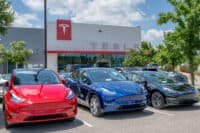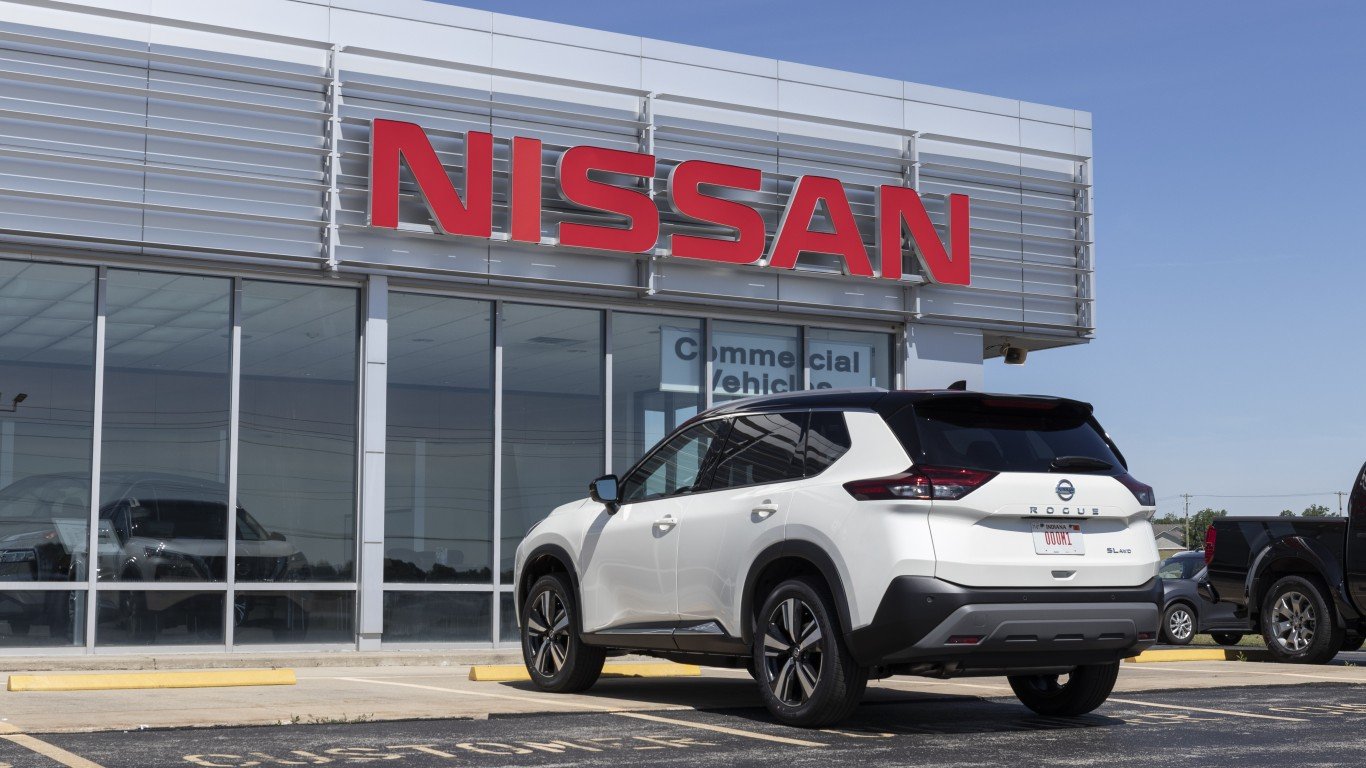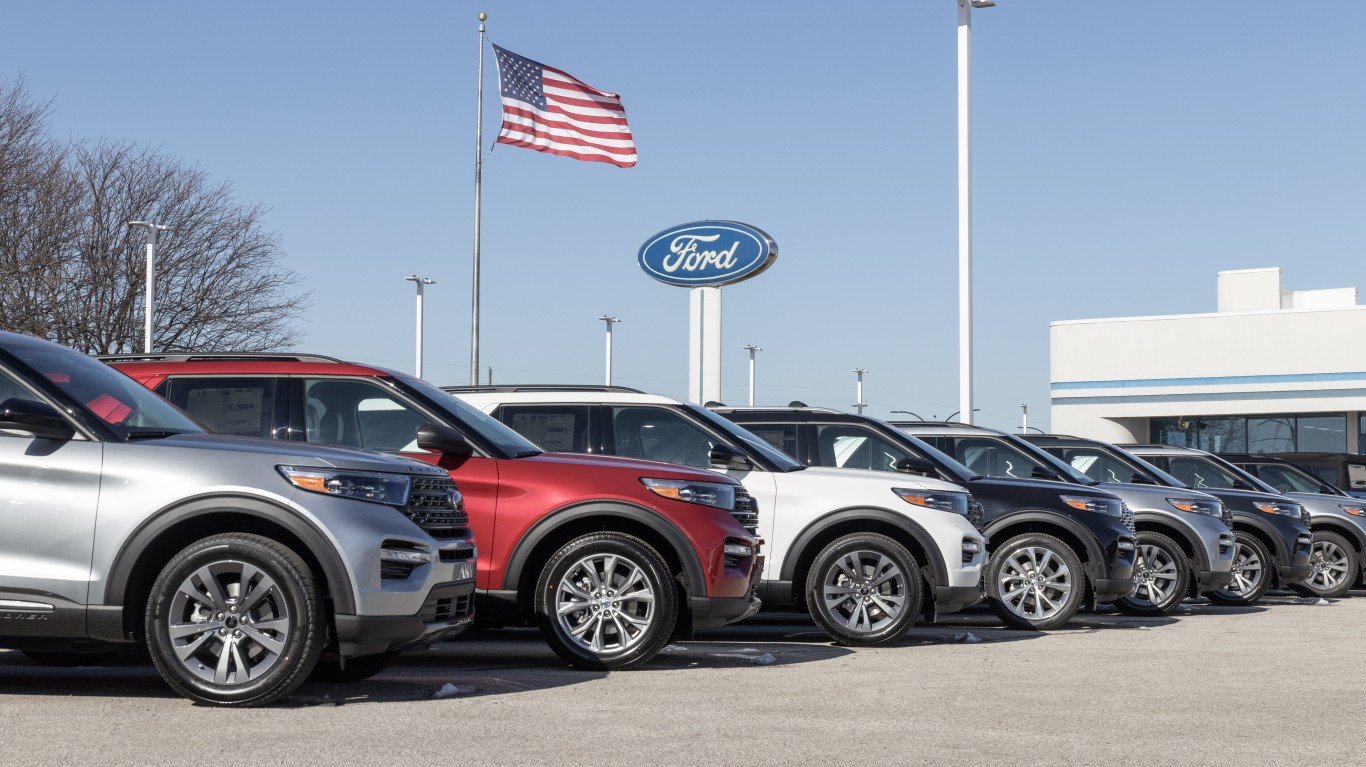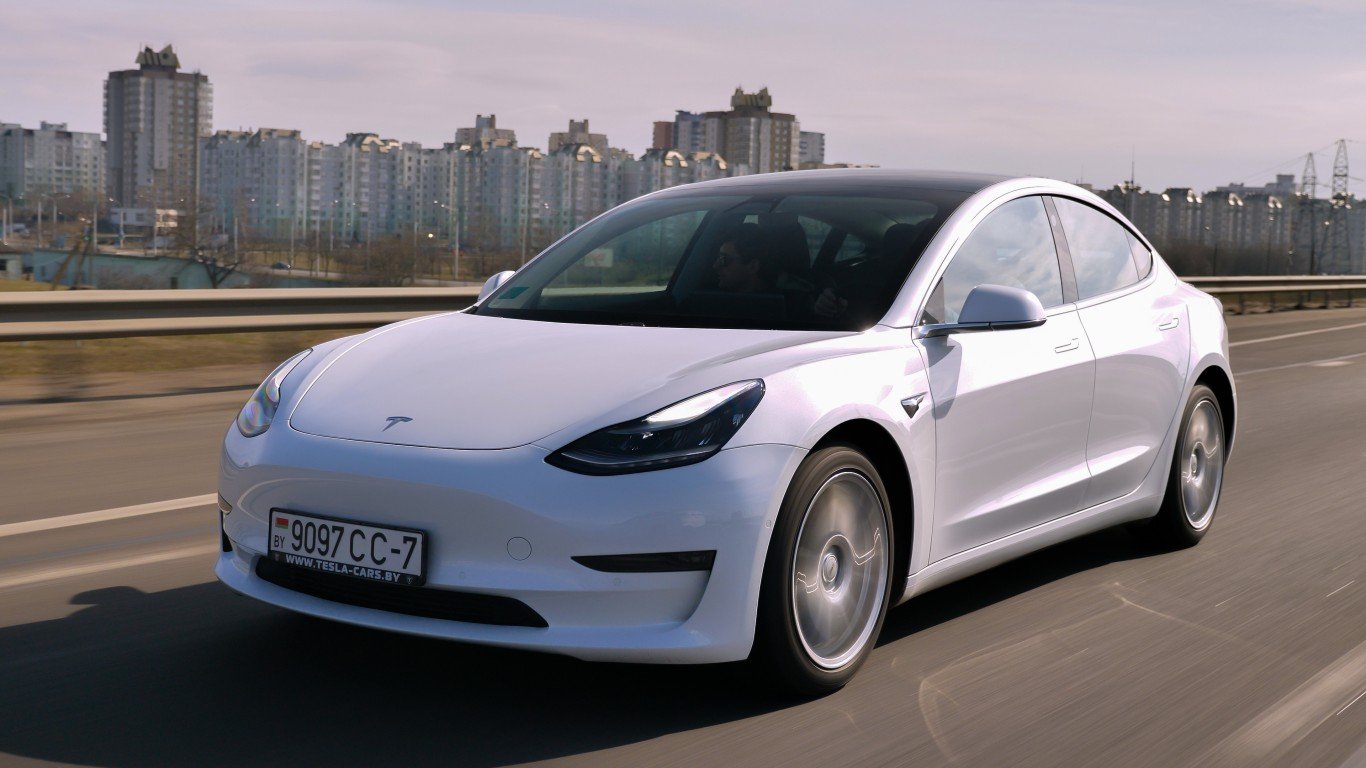

While most of us think of environmentally friendly cars purely in terms of tailpipe emissions, there are other considerations that influence a vehicle’s “greenness.” These include the type of fuel used to power the car, the materials that are used to manufacture the car and the ultimate disposal and recycling of the vehicle.
The American Council for an Energy-Efficient Economy (ACEEE) produces a ranking of all vehicles based on four specific data points for each vehicle: tailpipe emissions, given by the emissions standard to which a vehicle is certified; fuel economy, based on U.S. Environmental Protection Agency (EPA) test cycles; vehicle mass (curb weight); and battery mass and composition (for hybrids and plug-in vehicles). These data are combined with fuel economy ratings and used to generate a GreenerCar rating for each vehicle on a scale of 0 to 100. While the top scoring vehicles in 2015 posted GreenerCar ratings of 61, the average was 37 and the worst were down around 17.
The ACEEE’s GreenerCar ratings, like some other ratings organizations such as Consumer’s Union, have removed Green Scores and ratings for all clean-diesel (TDI) models produced by Volkswagen through model year 2015. Looking back through the Internet Archive at a snapshot of the ratings dated September 8, the 2015 TDI Golf and Jetta scored 47 and received an “above average ranking,” the best score of any diesel-powered vehicle, while diesel-powered Passats and Beetles scored 46 and received an overall score of “average.” For comparison, the Tesla Model S with an 85 kWh battery also scored 46, but earned an “above average” ranking.
The average per-mile environmental damage index (EDX) number for 2015 vehicles is 2.08 cents. The ACEEE determines the EDX by combining the average emissions rate for each stage of a vehicle’s lifetime and then assessing an economic value to the damage those emissions cause to the environment.
ALSO READ: 10 Brands That Will Disappear in 2016
The top 10 ranked 2015 vehicles range in price from a low of around $14,000 to a high of more than $47,000. As you might expect, most (seven) of the greenest cars are all-electric vehicles (EV). Two are hybrids, and just one is powered by a conventional internal combustion, gasoline-burning engine.
In the following list, we’ve used Kelley Blue Book to give the manufacturer’s suggested retail price (MSRP) for each car. The primary reason not to use manufacturers’ websites is that these have already switched to 2016 models. Fuel economy ratings were taken from the U.S. Environmental Protection Agency’s 2015 Fuel Economy Guide.
Sales numbers for individual models come from the September 2015 Dashboard at HybridCars.com. For total sales through September for all types of a given model, we used the tally from Good Car Bad Car.
The full list of 2015 cars and their rankings is available at greenercars.org.
2015 smart forTwo Coupe EV
> GreenerCar score: 61
> Manufacturer: Mercedes-Benz
> MSRP: $28,750
> Fuel economy (city/highway/combined): 122/93/107 mpg equivalent
> U.S. sales through September 2015: 955 (includes convertible model)
The smart forTwo car is an all-electric vehicle equipped with a zero-emissions (ZEV) electric motor. The car’s range specifications are 76 miles in city driving, 59 in highway driving or 68 miles combined. Including the gasoline-powered smart forTwo models, U.S. sales through September total 5,432. The gasoline versions of the car with a manual transmission get GreenerCar scores of 53 and mpg ratings of 32 city, 39 highway and 36 combined.
ALSO READ: America’s Most (and Least) Expensive Cars
2015 smart forTwo Convertible EV
> GreenerCar score: 61
> Manufacturer: Mercedes-Benz
> MSRP: $28,750
> Fuel economy (city/highway): 122/93/107 mpg equivalent
> U.S. sales through September 2015: 955 (includes coupe)
The convertible is functionally equivalent to the coupe.
2015 Chevrolet Spark EV
> GreenerCar score: 59
> Manufacturer: General Motors Co. (NYSE: GM)
> MSRP: $25,995 (for 1LT model)
> Fuel economy (city/highway/combined): 128/109/119 mpg equivalent
> U.S. sales through September 2015: 2,135
Sales of the all-electric Spark EV are up 138% in 2015, largely due to a price cut of $1,650 announced in April. When federal and state tax credits are applied to the car’s price, a Spark EV can be purchased for just under $15,000, according to USA Today. The battery range on the car is 82 miles. Like the smart forTwo, the Spark is also available in a gasoline-powered version with a manual transmission that delivers city/highway mpg ratings of 31/39. Including gasoline-powered versions, GM has sold 27,839 Spark cars through September. GM sells the EV in just three states: California, Oregon and Maryland.
2015 Fiat 500e EV
> GreenerCar score: 59
> Manufacturer: Fiat Chrysler Automobiles N.V. (NYSE: FCAU)
> MSRP: $32,700
> Fuel economy (city/highway): 122/108/116 mpg equivalent
> U.S. sales through September 2015: 3,841
The Fiat 500e all-electric car is available only for buyers in California and Oregon. Even so, it has sold more units than either of the electric cars ahead of it in the GreenerCar rankings. The EPA range on a full charge is 87 miles. The Fiat brand has sold 31,819 units in the first nine months of 2015.
ALSO READ: America’s 50 Best Cities to Live In
2015 Nissan Leaf EV
> GreenerCar score: 57
> Manufacturer: Nissan Motor
> MSRP: $29,860
> Fuel economy (city/highway): 126/101/114 mpg equivalent
> U.S. sales through September 2015: 13,630
While the Nissan Leaf is one of the top three selling EVs in the U.S. market, unit sales are down 37.5% through September. The Leaf’s range is listed as 84 miles by the U.S. EPA, but last month the company introduced the 2016 Leaf with a new, larger battery pack rated for a range of 107 miles.
2015 Prius C Hybrid
> GreenerCar score: 57
> Manufacturer: Toyota Motor Corp. (NYSE: TM)
> MSRP: $20,375
> Fuel economy (city/highway/combined): 53/46/50 mpg
> U.S. sales through September 2015: 29,649
Toyota’s Prius C is the second-best selling hybrid electric vehicle in the United States, trailing only the maker’s own Prius Liftback. The car’s primary engine is a 1.5-liter, 73 horsepower plant that is paired with a 73-kW electric motor that can power the car for up to half a mile under certain conditions in EV mode. The super, ultra-low emissions vehicle (SULEV) meets Tier 2/Bin 3 U.S. federal emissions standards.
ALSO READ: 10 States Draining the Country’s Energy
2015 BMW i3 REX PHEV
> GreenerCar score: 56
> Manufacturer: BMW
> MSRP: $47,200
> Fuel economy (combined): 117 mpg equivalent
> U.S. sales through September 2015: 7,893
The i3 REX, as ranked by ACEEE, is a plug-in hybrid (PHEV). The car is also available as a pure electric that sports a fuel economy rating of 137/111/124 mpg equivalent city/highway/combined. In the PHEV version the i3 REX includes a 0.6-liter, two-cylinder gasoline-powered engine that BMW calls a range extender (REX). The vehicle’s range with the extender is 146 miles; on battery only the EPA-listed range is 72 miles. BMW touts its manufacturing process for the i3 (and the i8 sports car), noting that the plant that makes the cars in Germany is powered by four on-site wind turbines and that the carbon fiber threads are manufactured with local hydropower in western Washington: “Overall, the production of the BMW i3 uses 50% less energy and 70% less water” compared to the standard BMW.
2015 Volkswagen E-Golf EV
> GreenerCar score: 56
> Manufacturer: Volkswagen
> MSRP: $34,270
> Fuel economy (city/highway/combined): 126/105/116 mpg equivalent
> U.S. sales through September 2015: 2,555
Unless VW can sell these Golf EV models by the dozens, the lost sales on the company’s diesel-powered vehicles absolutely swamp the number of the all-electric cars. The worst-selling VW diesel model is (was) the Beetle, with U.S. sales of just 864 through September, but even the next worst, the Golf Diesel, sold nearly three times as many units as the E-Golf, and the two best-sellers, the Golf Sportwagen and the Passat Diesel, have sold more than 16,000 each through September. The E-Golf’s estimated range is 83 miles.
ALSO READ: The 10 Most Profitable Companies in the World
2015 Kia Soul EV
> GreenerCar score: 55
> Manufacturer: Kia Motors
> MSRP: $34,525
> Fuel economy (city/highway/combined): 120/92/105 mpg equivalent
> U.S. sales through September 2015: 727
The Kia Soul is a popular subcompact that has sold a total of 112,683 units in the United States in the first nine months of 2015. The all-electric version accounts for just 0.6% of those sales. The Soul EV includes a virtual engine sound system to alert pedestrians that the car is approaching and also includes a regenerative braking system.
2015 Mitsubishi Mirage
> GreenerCar score: 54
> Manufacturer: Mitsubishi Motors
> MSRP: $14,910
> Fuel economy (city/highway/combined): 37/44/40 mpg equivalent
> U.S. sales through September 2015: 17,971 (all models)
The Mirage is the only gasoline-powered vehicle among the GreenerCar top 10. Its MSRP is also far and away the lowest of any car among the top 10. The subcompact car’s 1.2-liter, three-cylinder engine generates 74 horsepower. Sales of all Mirage models are up nearly 40% year to date, compared with 2014.
ALSO READ: The Most Popular Brand in Each State
Essential Tips for Investing: Sponsored
A financial advisor can help you understand the advantages and disadvantages of investment properties. Finding a qualified financial advisor doesn’t have to be hard. SmartAsset’s free tool matches you with up to three financial advisors who serve your area, and you can interview your advisor matches at no cost to decide which one is right for you. If you’re ready to find an advisor who can help you achieve your financial goals, get started now.
Investing in real estate can diversify your portfolio. But expanding your horizons may add additional costs. If you’re an investor looking to minimize expenses, consider checking out online brokerages. They often offer low investment fees, helping you maximize your profit.
Thank you for reading! Have some feedback for us?
Contact the 24/7 Wall St. editorial team.



